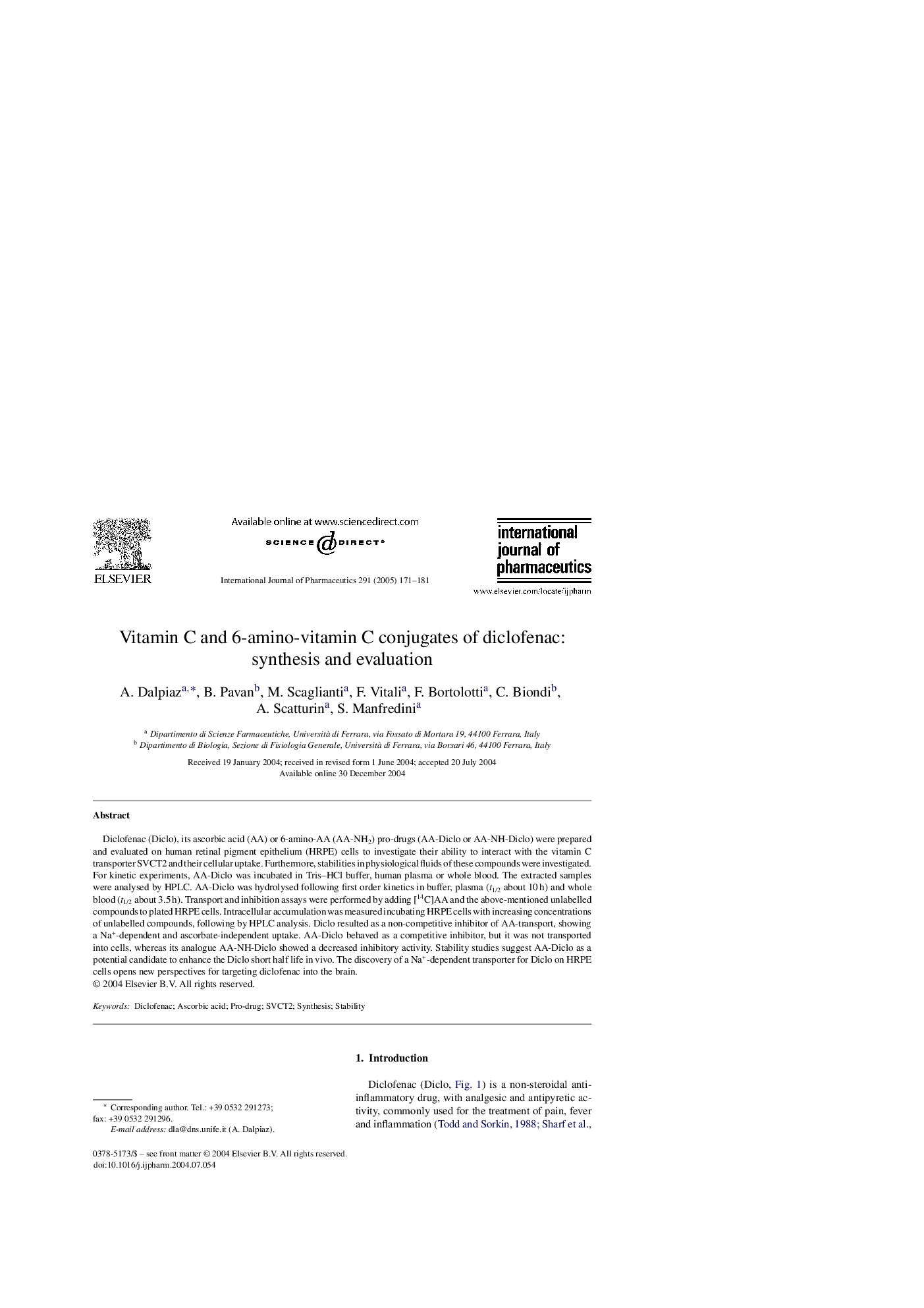| Article ID | Journal | Published Year | Pages | File Type |
|---|---|---|---|---|
| 9918940 | International Journal of Pharmaceutics | 2005 | 11 Pages |
Abstract
Diclofenac (Diclo), its ascorbic acid (AA) or 6-amino-AA (AA-NH2) pro-drugs (AA-Diclo or AA-NH-Diclo) were prepared and evaluated on human retinal pigment epithelium (HRPE) cells to investigate their ability to interact with the vitamin C transporter SVCT2 and their cellular uptake. Furthermore, stabilities in physiological fluids of these compounds were investigated. For kinetic experiments, AA-Diclo was incubated in Tris-HCl buffer, human plasma or whole blood. The extracted samples were analysed by HPLC. AA-Diclo was hydrolysed following first order kinetics in buffer, plasma (t1/2 about 10Â h) and whole blood (t1/2 about 3.5Â h). Transport and inhibition assays were performed by adding [14C]AA and the above-mentioned unlabelled compounds to plated HRPE cells. Intracellular accumulation was measured incubating HRPE cells with increasing concentrations of unlabelled compounds, following by HPLC analysis. Diclo resulted as a non-competitive inhibitor of AA-transport, showing a Na+-dependent and ascorbate-independent uptake. AA-Diclo behaved as a competitive inhibitor, but it was not transported into cells, whereas its analogue AA-NH-Diclo showed a decreased inhibitory activity. Stability studies suggest AA-Diclo as a potential candidate to enhance the Diclo short half life in vivo. The discovery of a Na+-dependent transporter for Diclo on HRPE cells opens new perspectives for targeting diclofenac into the brain.
Related Topics
Health Sciences
Pharmacology, Toxicology and Pharmaceutical Science
Pharmaceutical Science
Authors
A. Dalpiaz, B. Pavan, M. Scaglianti, F. Vitali, F. Bortolotti, C. Biondi, A. Scatturin, S. Manfredini,
